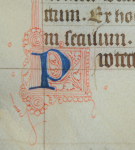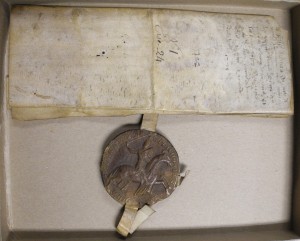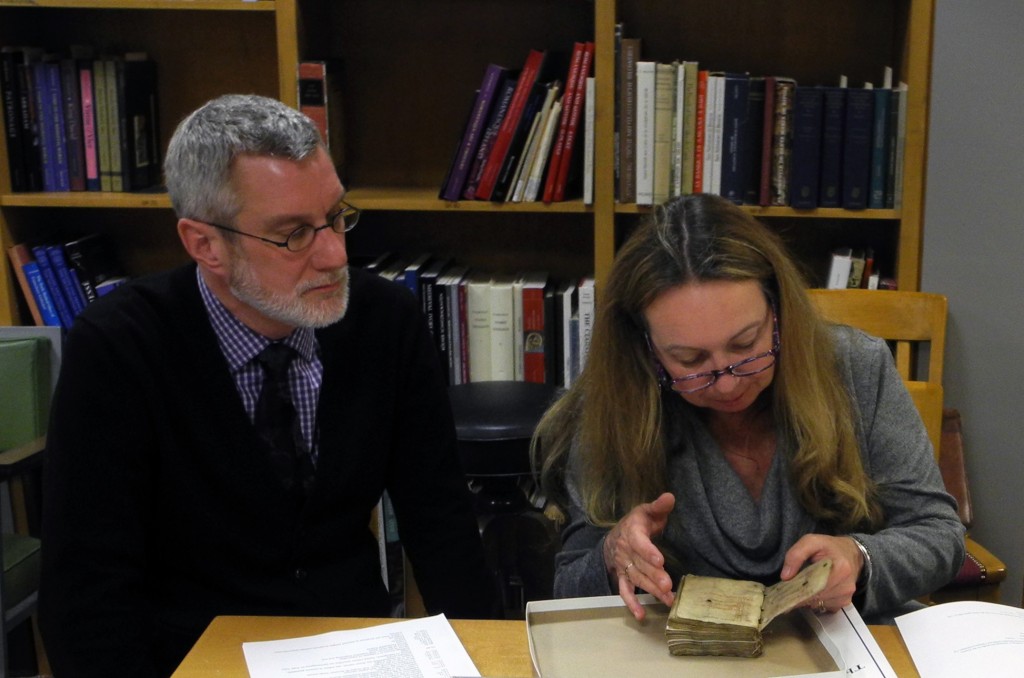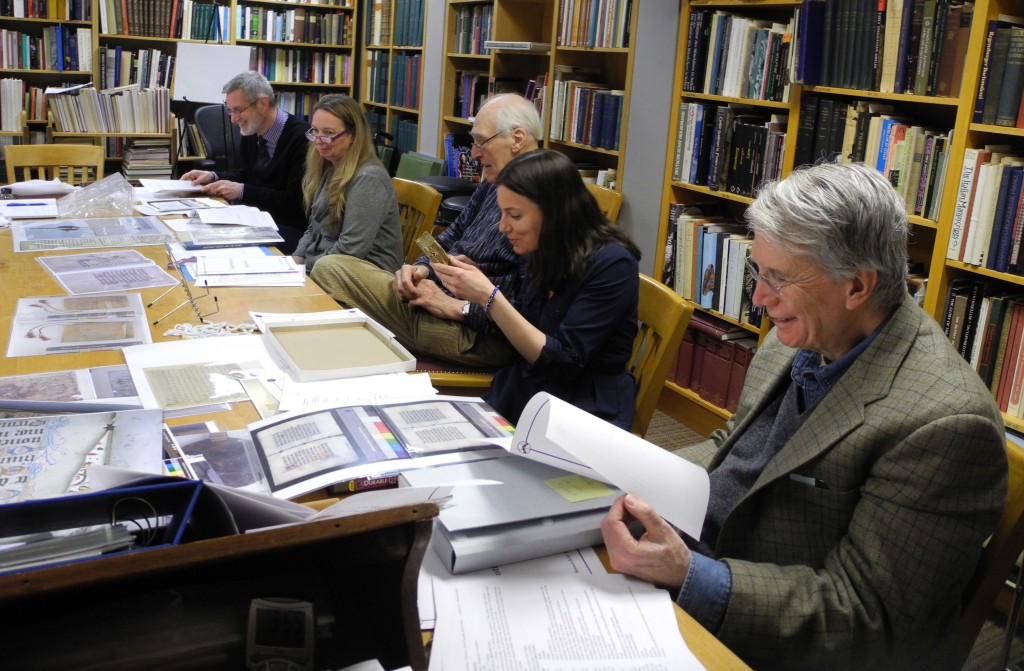2014 Seminar on “Manuscripts & Their Photographs”
December 12, 2014 in Events, Manuscript Studies, Photographic Exhibition
Close Up & Up Close
On Tuesday, 9 December 2014, we held a seminar at the Index of Christian Art of Princeton University. With examples on hand, Giles Constable and Mildred Budny offered reflections on the processes involved in
1) assembling over decades an ‘accumulation’ — not exactly a deliberate ‘collection’ — of medieval manuscripts (or fragments thereof), documents, and early printed materials, and
2) photographing them over several years, in stages and under varied conditions, for the record and for research, sometimes along with conservation work (where called for in certain cases).
Cases in Focus
Photographs representing most of the ‘accumulation’ illustrated its range, from manuscript fragments to documents in full. Among them are individual leaves or bifolia which have come respectively from a Breviary, a Missal, a small-format Bible, a Psalter, a copy of the Homilies of Gregory the Great, a copy of Justinian’s Novels, and a papal bull. Some of these fragments have found reuse in the medieval or early modern periods, and perhaps thereby their means of preservation, as binding material — in the forms of covers or wrappers — for other written or printed materials. In some cases, the photographs reveal more elements of the text and other features than might readily appear directly to the eye.
The originals brought to the table included:
- a charter of 1275 of Philip II, Count of Savoy, with the most complete extant version of his seal in wax
- a despoiled Book of Hours of circa 1400 from France or Flanders
- a set of 19 separate leaves on unwatermarked paper from a copy of the Vitae Patrum (‘Lives of the Desert Fathers’) in heavily abbreviated and cursive script, and
- the early printed book (1527) for which those paper leaves were reused, pasted together, as the front and back covers, and from which they were retrieved in the 20th century, albeit much damaged.
An earlier report on the “Desert Fathers” manuscript and its context, with photographs, formed part of our 2013 Symposium on “Identity & Authenticity”, for which the abstract is available here. Now, at the seminar, we could examine its pages themselves, now conserved in their original textual order (albeit incomplete), as well as the early printed book with which it had been bound for centuries.
Details Included
Here, we considered the significance of preparing photography of manuscript and related evidence by, or supervised by, manuscript scholars. We observed the manifest usefulness, in varied cases, of photographs made of a single page, taken with different backgrounds and/or under different lighting conditions — a luxury normally not to be found in ambitious projects to produce online digital facsimiles of manuscripts and other written materials, when a single view under a specific pre-determined setting and approach may have to suffice. While freely recognizing the helpfulness of imaging aids and digital photographic enhancement, we nevertheless recognized some vital differences grounded in the varied, and flexible, selection of backgrounds, lighting, angles, apertures, and equipment —which may come within the reach even of a low-budget setup.
Adelaide Bennett, our Trustee and Acting Director of the Index of Christian Art, presented a detailed report of her research-in-progress on the Book of Hours (a recent arrival in the ‘accumulation’), with an account of its contents and its intended ownership by a female reader.
We thank the Index of Christian Art for hosting this event. We hope to report more results of these investigations as they unfold.
*****
Updates: This event inspired a flow of illustrated reports and reflections about manuscripts, fragments, photography, and Close Encounters with Manuscript Fragments. Starting with Gregory Mass, then heading onto ‘Foundling Hospital’ for Manuscript Fragments, and moving on from there. More to come.
*****





[…] several events in our 2014 Anniversary Year: a Symposium in May, a Colloquium in November, and a Seminar in […]
Cool site. Cheers for posting